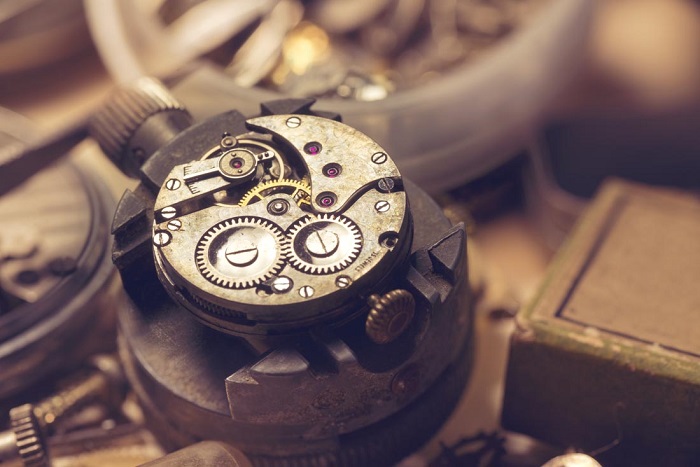


Mechanical watches can generally be divided into two types: manual winding and automatic winding. The power source of these two machines is powered by the spring in the movement, which drives the gear and then pushes the watch hands, but the way of power source is different. But the overall working principle is similar, so what is the principle of mechanical watches? As a mechanical watch manufacturer, we have more than 10 years of experience in manufacturing mechanical watches. Next, we will share with you the principle and operation of mechanical watches.
The mainspring is the part that provides energy for the watch. The coil is wound in the barrel. The mainspring is wound up using the milled square groove on the arbor. The square groove of the barrel shaft is driven by the winding mechanism. The watch can run for about 36 to 50 hours without rewinding. Since the mainspring is subject to significant stress, it often leads to breakage. Therefore, at present, alloy materials are used to make the mainspring almost unbreakable.

What is the principle of a mechanical watch? The mainspring stores a certain amount of energy to be distributed evenly in small amounts to the oscillator. To this end, the supplied energy passes through the wheel train, which reduces the transmission force in the same proportion and increases the number of turns. The wheel set includes 4 wheels and 4 gears, and the rear 3 wheels are riveted on the front 3 gears.
The slashes indicate the engagement between the moving parts, while the horizontal lines indicate that the moving parts are riveted on the same shaft. The first wheel is a barrel with milled teeth on the circumference. The last wheel is the escapement wheel, onto which the escape wheel is riveted. The escape wheel belongs to the distribution mechanism and the counter. The barrel rotates for about 6 hours, and during this time, the escapement gear and the escapement wheel rotate about 3600 times. This number represents the rotation frequency ratio between the first wheel and the last wheel. The ratio is always within this value range. Generally, try to keep the gear and minute wheel in the center of the watch and make one revolution per hour.
The mechanical watch that manually goes up a chain is to rely on manual work, the thickness of the machine core is a little thinner than the watch that goes up automatically normally, relatively the weight of the whole watch is just lighter. The self-winding watch uses the power generated by the left and right swings of the automatic plate at the bottom of the movement to drive the mainspring to generate energy, but the relative thickness of the watch book will be thicker than that of ordinary hand-wound watches. The advantages of mechanical watches are: after regular maintenance and oil washing, they can be used for a long time; but the disadvantages are: the error is larger than that of quartz watches, due to the quality of production and the movement inside the watch is easily affected by gravity. error occurs. Usually, the error of a mechanical watch is calculated by the difference in seconds per day, while the error of a quartz watch is calculated by the difference in seconds per month.
The above is the principle and operation mode of mechanical watches. Compared with quartz watches, mechanical watches are usually more expensive. If you need to customize mechanical watches, please contact us. We are a trustworthy mechanical watch manufacturer and can meet your various needs.

2F, Building A, Shimei Industrial Park, Dalang Town, Longhua District, Shenzhen, China